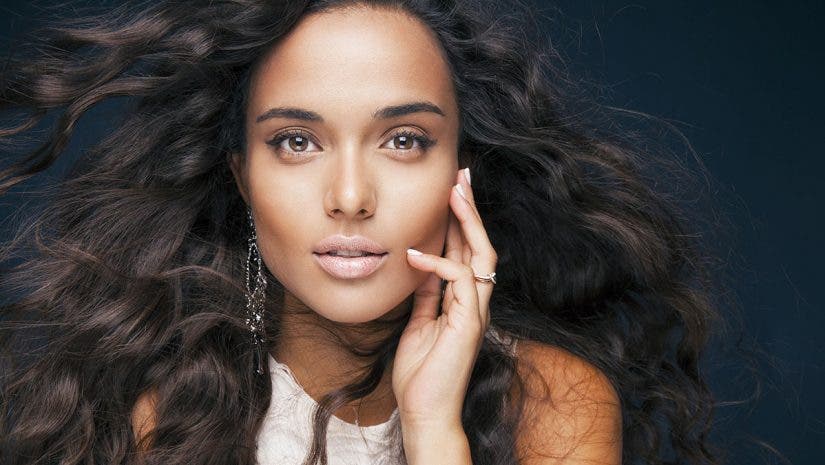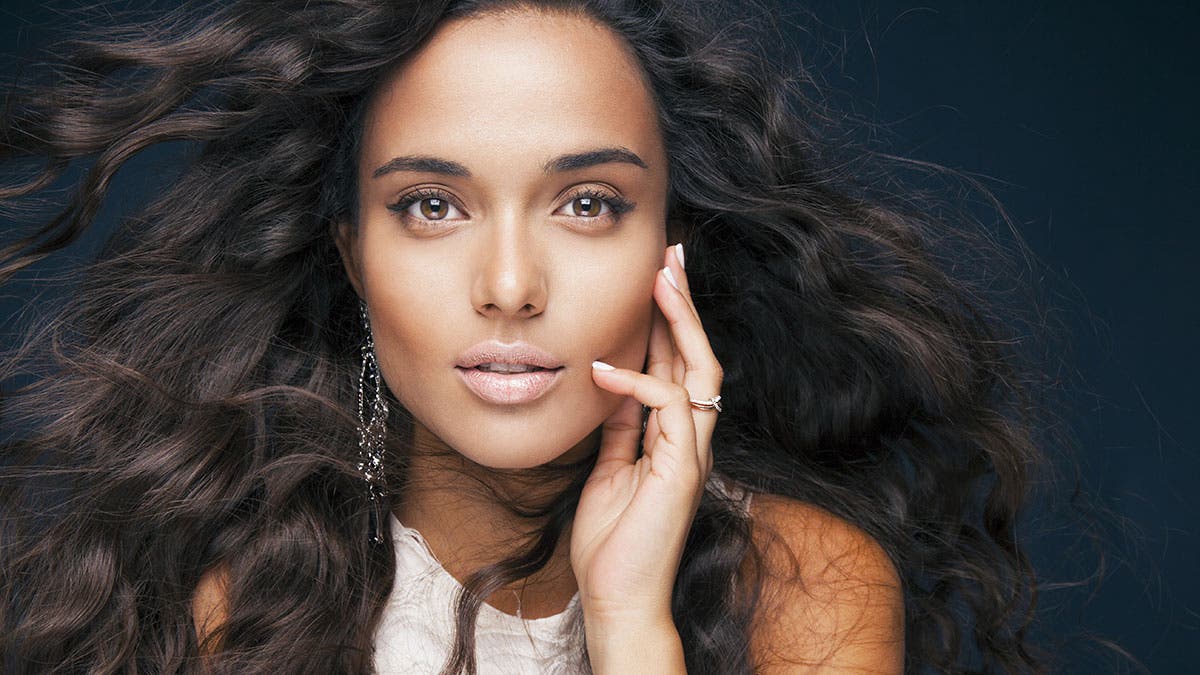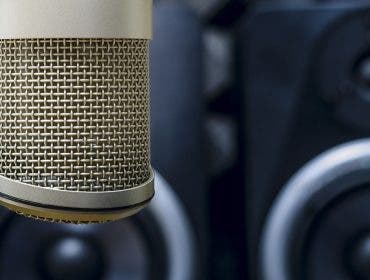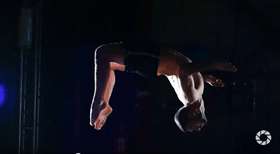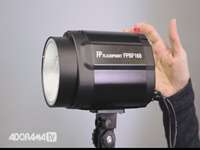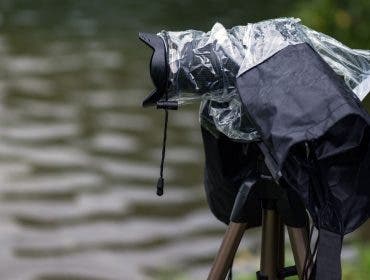Of the many choices for lighting portraits, the Beauty Dish offers a dramatic light that wraps around your subject’s face, providing a classic look to your portrait photography.
Portrait photography lighting has four major characteristics: color, direction, quantity, and quality. Using lighting modifiers, such as a beauty dish with a monolight or power pack and head systems, lets you control the light’s directionality and quality.
A beauty dish is a different kind of light modification device because it doesn’t diffuse light. It’s a metal reflector that uses its parabolic shape to distribute light towards a focal point, and is an alternative to a softbox. It wraps light around a subject, producing an effect somewhere between direct flash and a softbox, and adds drama when used with accessories like a grid.
A beauty dish is used in portrait and fashion work to generate a concentrated pool of light and produce its characteristic round catch light in the subject’s eyes. Beauty dishes are available in various configurations, with Glow versions having a round metal shield that blocks light from the flashtube and fills the dish with soft, indirect light. A translucent fabric diffuser (“strobo-sock”) is included with Glow beauty dishes to provide additional softness with white-lined dishes or cut the contrast from silver-lined models.
Glow offers six different kinds of beauty dishes for Flashpoint including 17, 22, and 28-inch models, each available with either white or silver lining. For this article, I used the 28-inch beauty dish with white lining. The white interior produces softer light and the silver creates a snappier look. While 28-nchs sounds small, but it is a big hunk of metal, so make sure you have enough shooting space to use it and a place to store it.
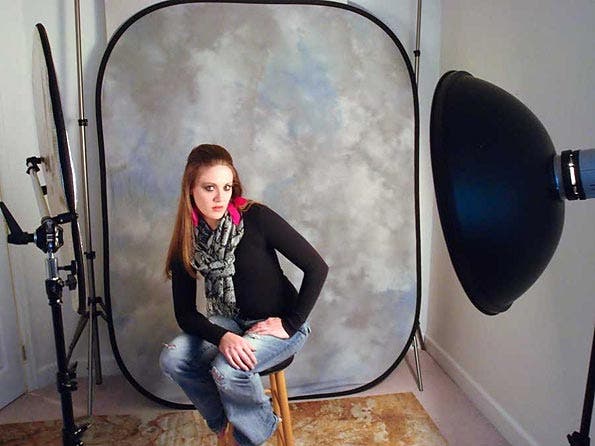
If you read my article “What Everybody Ought to Know About The Shape Of Soft Boxes For Flash” please note the beauty dish in these comparison photos was placed in the same spot for this series photographs. This allows you to compare the results from different kinds of Soft Boxes to a beauty dish. With this set-up, I felt the dish needed some fill and placed a 32-inch Glow 5-in-1 reflector at camera left, as shown. © Joe Farace.
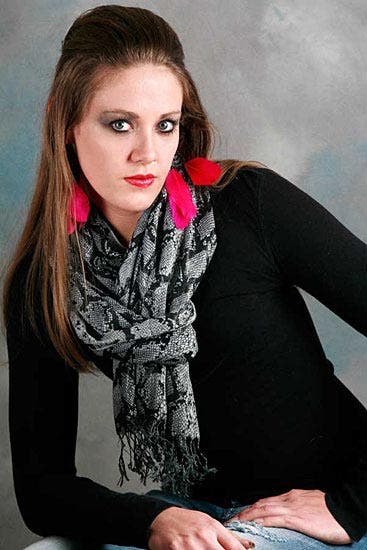
With a 32-inch Glow 5-in-1 reflector at camera left, the 27-inch beauty dish mounted on a 620M Flashpoint monolight (at half-power) creates soft, even light that your portrait subjects should like. Camera was Canon EOS 5D with Canon EF 135mm f/2.8 Soft Focus lens and an exposure of 1/125 sec at f/16 and ISO 100. © Joe Farace
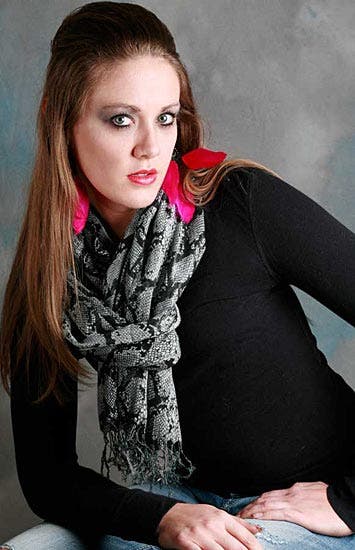
Next I attached the “strobo-sock” that‘s included to the Glow beauty dish. It creates an even softer, more wraparound light that produces a bit of a glow making it an excellent choice for glamour or boudoir-type portraits. The exposure was the same: 1/125 sec at f/16 and ISO 100. © Joe Farace
;are useful accessories for any studio lighting system, and when mounted on a beauty disk (or soft box for that matter), they alter the shape and intensity of the light output, focusing the light more directly on the subject. A grid provides a wider beam than a snoot so it’s useful for focusing light on a particular part of the subject or narrowing the amount of light that falls on them.
Because a grid, in effect, blocks some of the light output, it produces less light so you’ll need to either crank up the power of your light source or increase the camera’s ISO setting to maintain the same aperture as an un-gridded shot. Attaching a Glow Grid to any of their beauty dishes is a simply a matter of snapping a few clips to its edge; ultimately mounting flush with the front of the dish. A grid adds flexibility to using a beauty dish that along with its fabric diffuser lets you produce three different looks from a single light source.
Watch this video to learn more about using grids.
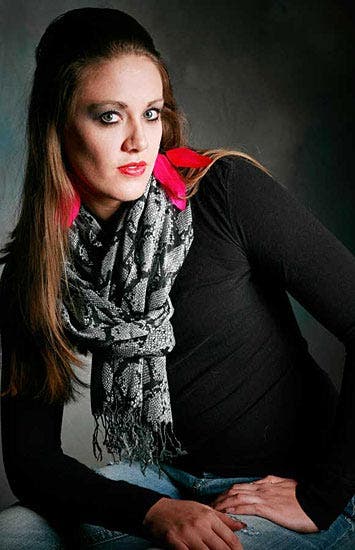
Attaching a grid to the beauty dish produces more drama and directionality to the photograph creating a completely different mood. It also takes away some of the light so you’ll need to increase the exposure. If I were delivering this portrait to a client, I would also add some soft focus to the image to make it more flattering while maintaining all the drama a grid provides. Canon EOS 5D with Canon EF 135mm f/2.8 Soft Focus lens and an exposure of 1/125 sec at f/9 and ISO 100. © Joe Farace
Joe Farace is the author of the book “Studio Lighting Anywhere” which is available from Adorama
